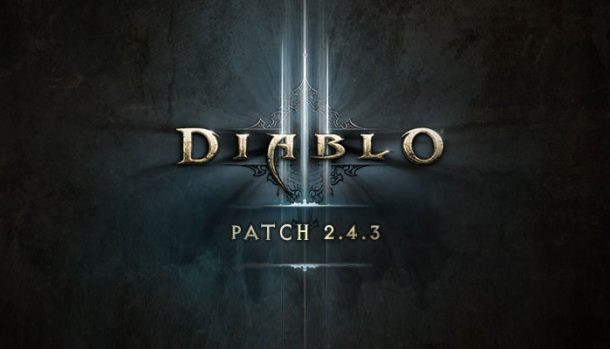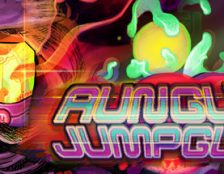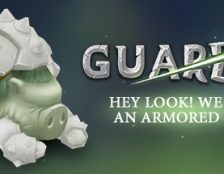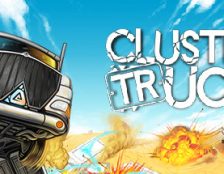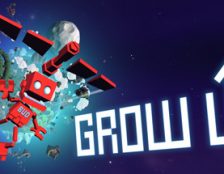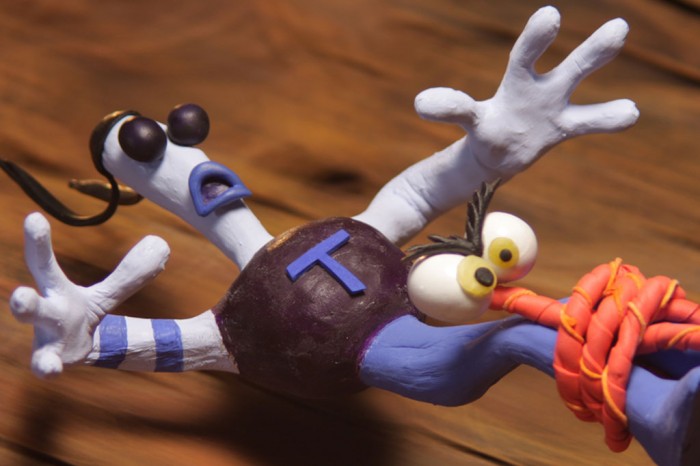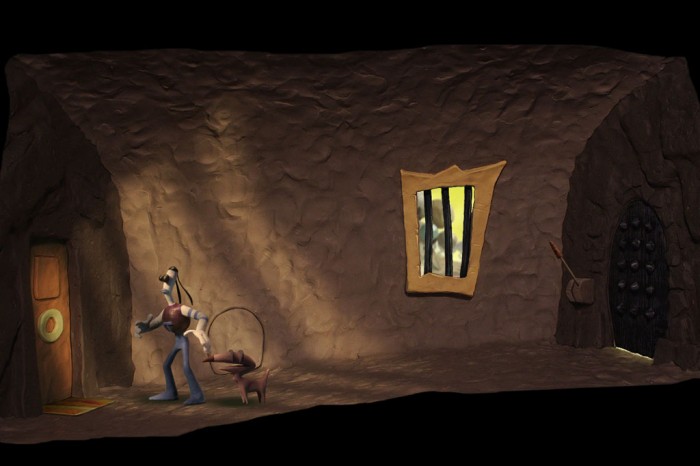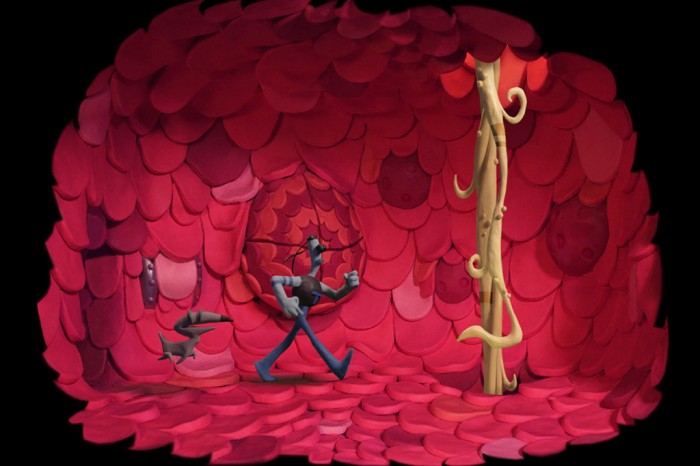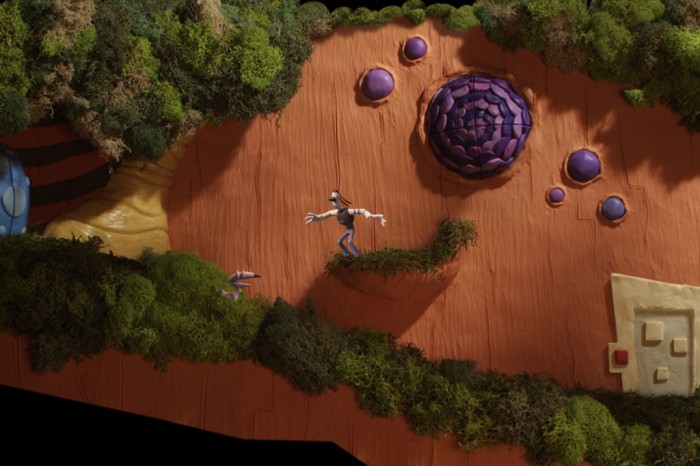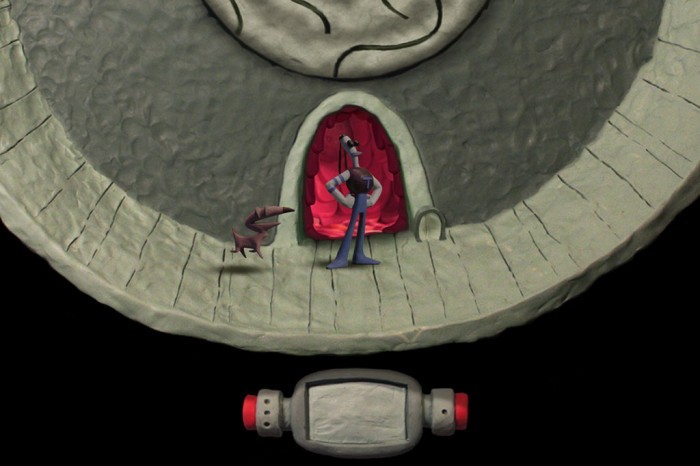Armikrog starts with a bombastic, hyperactive animation, followed by a theme song similar to the ones from the ’80s and ’90s cartoons. Before you get a chance to come around after this epic blow to all your senses (or in our case, nostalgia) comes another amazing animation, this time in a stop-motion technique in the sumptuous claymation style from the rest of the game. The visual style is definitely the main selling point of this game, and a large number of models and locations were really made from plasticine/clay and other materials and later the photos were incorporated into scenes that we see in the final product. As a spiritual successor to the almost two decades old game, The Neverhood, Armikrog also places the player in a weird world full of mysteries that invite you to investigate. It’s a pity that the rest of the game’s quality does not follow up to the one it starts with.
After the intro song in which you find out that the home planet of our heroes Tommynaut and Beak Beak has started to die and that is why they went to the mysterious planet Spiro 5 to find a new type of fuel. And this is basically all you’ll know as far as the story is concerned while you’re wandering about the titular fortress. There is no story development until the very end when suddenly a new important character appears and that’s when the game pours exposition on you like an avalanche. And even then you’re not discovering it by playing, but mostly through cinematics, which are at least very well animated.
So, if the story is rushed, at least the gameplay must be good, right? Unfortunately, we have many criticisms for that too – even more than for the narrative side of the game. Armikrog is a point & click adventure in a very traditional sense and, like Neverhood, it doesn’t show you an object in your inventory but your character automatically uses it when you click on the appropriate location. This means that there are no inventory puzzles and that you’ll also have to carefully monitor everything you pick up, especially if you make pauses while you play. We can understand that Neverhood can’t be faulted for this approach, but it has been 19 years since and the genre has advanced in the meantime. Also, designers seem to have forgotten to read their copies of “Basic Game Design”, because you will encounter a lot of objects and buttons whose purpose is impossible to determine or if they’re just a part of the scenery or they’ll become interactive later in the game. The problem lays in the fact that if, for example, a button cannot be activated at one time because there is no electricity, then none of your characters will be able to press it – they’ll simply walk to that part of the screen. Only when you enable the electricity in that part of the scene will the button become interactive, and even then you’ll have to figure out which one of the characters is supposed to press it. The characters don’t comment on their surroundings and give you exactly 0% hints on what is supposed to be done in a scene, and even the mouse cursor won’t change it’s shape from the standard Windows pointer, which makes the whole thing seem way less interactive than it really is.
Problematic design of the puzzles and bad communication with the player make Armikrog much more difficult than it really is. Here you won’t be opening dungeon doors with a bottle of grog or make false moustache in order to make a fake ID card, but you’ll encounter recycled puzzles who rather belong in some free to play mobile game than in a million-dollar project. During the game you will have to repeat the task of lining up stuffed animals 3 times, a very slow and tedious task because that sequence controls the melody playing in the background and a single mistake means you’ll have to listen to the whole melody all over again since you have to start making the combination again from the beginning. Even worse than this are the puzzles involving moving blocks which form a picture to open up a path. These tasks are testing the players’ nerves instead of their cleverness and attention to subtle hints and details. In our case we got stuck twice, at two spots that have been complained about by the majority of other players on the Steam forums. We’ll reveal one of these places to you, because it serves as a perfect example of the catastrophic game design and we don’t consider it to be much of a spoiler since it is plainly a big oversight – Beak Beak can talk to the octopus-elevators. This wasn’t even hinted at previously at any given moment in the game because, while you’re playing as a dog-like creature, all interactive objects are specially highlighted apart from, you guessed it, exactly those octopi, which even completely blend into the background due to the temporary palette change to a high-contrast black and white.
Ever since it came out, Armikrog was said to be a bug-filled game, and the forums were overflowing with various complaints, from the completely empty main menu because the game didn’t recognize the system language to skipping whole parts because the game’s logic ‘snapped’ so you magically end up having every necessary item. This is really devastating considering that the game’s release was postponed twice at the last moment. During our run we didn’t encounter any major bugs before the last third of the game where we managed to completely confound the game. In one room there is a button that Beak Beak can stand on, allowing you to control Tommy from then on. If you go a bit further and get to a vertical pipe, it will suck in your character and the game gets stuck there, so the only solution is to load a previously saved game. The problem here is that you’re supposed to have both of your characters present for that scene, but that’s not even hinted at before, like with the majority of puzzles as we mentioned before. The game also has trouble with the sound, mostly with music which sometimes turns it’s volume down for about ten minutes, but also with interrupting dialogues which leaves to the player watching a subtitled pantomime.
Armikrog would have easily been discarded as an amateur half-product if it didn’t look so lovely and unusual. It’s a great shame that because of programmers’ and designers’ incompetence all this hard work is gone to waste, all those stunning landscapes and objects which someone’s been building for months and carefully animated picture by picture is now in the same boat with some of the most irritating puzzles we’ve seen in the last few years. Considering that it doesn’t take more than 3-4 hours to finish the game, the price of 25€ is an insult. Just like Broken Age before it, Armikrog is a million-worth Kickstarter project that fails to justify it’s pedigree and unsuccessfully relies on the good will and nostalgia of fans. Patches will correct the problem in the code, but the puzzles which once gave the adventure games a bad reputation will remain. Also, the last cinematic ends with a hint for a sequel. We doubt it will ever be made.
Author: Bojan Jovanović


